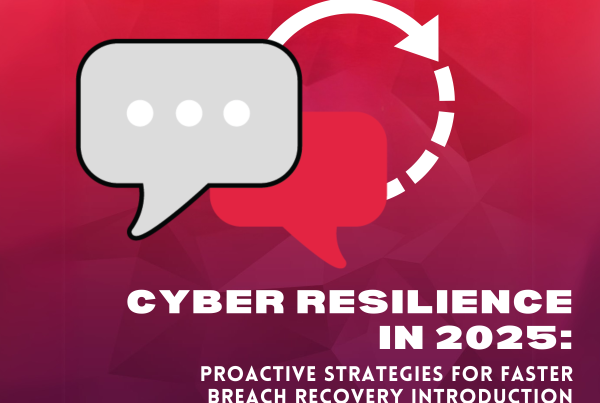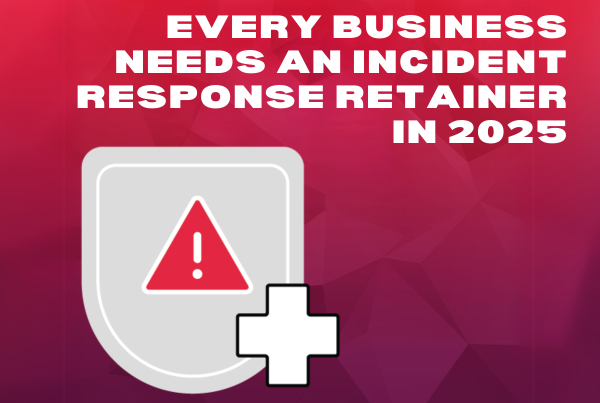The reputation of a brand is a valuable asset for businesses large and small. It can determine the range of success it can have and with the rise of social media, an online presence is crucial for businesses to move forward.
The internet has opened up new possibilities for companies all around the globe. It has allowed them to reach people from different parts of the world and connected people with one another. However, digitization brings new risks and challenges. Malicious third parties can take advantage of intellectual properties in many ways which can be detrimental to a company’s image. Therefore, online brand protection is a crucial step for organizations to take to protect themselves.
The Threats
It is no secret that cybercrimes are on a rise. According to cybersecurity experts, there will be attacks every 11 seconds this 2021 and only 14% of small businesses are prepared for it. One attack hackers use is brand impersonation. Hackers would impersonate a legitimate brand to trick victims into divulging personal and sensitive information.
Threat actors will utilize various digital vectors for their attacks. They would use social media to carry out their schemes. Hackers will create fake or compromise targeted employee accounts to gain the trust of victims. At times, they would also go as far as to hack and gain control of popular personalities or corporations’ social media accounts. Hackers would also utilize emails by sending victims malicious spam messages. By spoofing legitimate emails, the recipient would open the email believing that it is from a trusted course. Some attacks would also include hacking a company’s emails system and send malicious emails to other employees through it.
Phishing websites are also a threat for brands and with the progression of skills and techniques, hackers are getting better at it. They create websites that imitate the brand’s image to trick users into divulging login information or, at times, bank information. According to statistics, approximately 80,000 phishing sites are created each month and are only growing in number, creating challenges for businesses alike.
Data leak is another threat that brands need to be wary of. Threat actors would attempt and, at times, succeed in stealing sensitive data such as customer information. It can greatly affect a brand’s reputation and is hard to recover from. There are multiple reasons why data leaks:
- Employees falling for phishing scams and accidentally allowing threat actors access to internal files and passwords
- The third-party has vulnerabilities that threat actors can enter and access data from
- Employees are tricked into divulging passwords and access to other data
- Malware through email
Cyberattacks are majority profit-driven attacks and have become an industry in itself. Ransomware has become a popular method for threat actors and is targeting government a wide range of private and public organizations. CNA Financial, one of the largest insurance firms in the US, had to pay $40 million after a ransomware attack blocked access to their network and stole data. Another significant attack that happened this year was the Colonial Pipeline attack. They fell victim to a ransomware attack that caused them to halt operation for a few days, creating nationwide panic and gas shortages. Ransomware attacks can inflict a lot of damage to brands in many ways. Brands can lose customers, halt operations, and pay large fines for failing to protect customer data; all devastating consequences for brands to recover from.
Intellectual property infringement is another threat brands should be cautious of. It refers to any violation of protected intellectual property rights and it comes in many forms:
- Malicious search engine optimization (SEO) tactics that target brand names and keywords
- Unsolicited emails that impersonate a brand
- Online sale of counterfeit goods that take advantage of a brand’s reputation
- Threat actors register an internet domain in a legitimate company’s name to resell it at a profit (Cybersquatting)
Threat actors would also compromise a brand’s website and replace the content with their own messages. A website defacement attack can severely damage a brand’s reputation and can cause lasting effects on the business.
Brand Protection and Threat Intelligence
There are numerous threats that businesses and organizations will face in today’s environment. To succeed, companies need an online presence and with the expanding work from home environment, the majority of them had to adapt to virtual space to keep operations running. Because of this, there are new risks that they have to face.
Threat Intelligence is a solution that can help create an effective defense mechanism and mitigate the risks that could damage a brand’s system and reputation. It gives the capability to defend more proactively and detect attacks in real-time and act when a threat emerges. There are three main features of Threat Intelligence:
- Monitor
Threat Intelligence gives a company the capability to monitor any threats. It allows organizations to sift through the Internet, Dark web, and Deep web to gather data about upcoming and current threats by monitoring numerous sources such as online marketplaces, forums, and social media sites.
- Detect
The main objective of Threat Intelligence is to inform an organization of the risks of threats actors and how to protect themselves against them. The platform detects threats before they can breach a company’s system and allows them to take a proactive approach to cyber risks. Threat Intelligence solution monitors risks such as supply chain risks, risk-related actions by employees, brand impersonation, and phishing.
- Act
Once data is gathered, it will then analyze and filter the findings to produce a threat intelligence feed and management reports for a company to use. It will also regularly alert a business if there are any threats that can negatively affect them.
A Threat Intelligence platform is a solution that brands need to adapt into their system to secure confidential information. At the end of the day, brands are responsible for keeping their customers’ information safe, and with Threat Intelligence, they can do so.
Our partner Cyberint is a leading cybersecurity company that specializes in Threat Intelligence solutions. They have a dedicated team that is capable of responding to any alerts in real-time and help keep threat actors at bay. Threat Intelligence is a proactive approach to protecting your brand and its reputation by monitoring, detecting, and acting upon threats that come your way.
About IPV Network
Since 2016, IPV Network has been a trusted partner of leading enterprises in the Philippines. It brings the best-of-breed cybersecurity solutions. IPV network helps businesses identify, protect, detect, respond, and recover from cyber threats. Email us at [email protected] or call (02) 8564 0626 to get your FREE cybersecurity posture assessment!
References:
Sobers, Rob. “81 Ransomware Statistics, Data, Trends and Facts for 2021 | Varonis.” Inside Out Security, 7 July 2021, www.varonis.com/blog/ransomware-statistics-2021.
Chang, Brittany. “One of the Biggest US Insurance Companies Reportedly Paid Hackers $40 Million Ransom after a Cyberattack.” Business Insider, 24 May 2021, www.businessinsider.com/cna-financial-hackers-40-million-ransom-cyberattack-2021-5?international=true&r=US&IR=T.
Parent, Michael. “In 2021, There Will Be a Cyberattack Every 11 Seconds. Here’s How to Protect Yourself.” ThePrint, 13 Dec. 2020, the print.in/tech/in-2021-there-will-be-a-cyberattack-every-11-seconds-heres-how-to-protect-yourself/565616.
“Why Your Brand Protection Relies on Threat Intelligence?” Cyberint, 28 Apr. 2021, blog.cyberint.com/why-your-brand-protection-relies-on-threat-intelligence.


